set theory and logic
1/43
There's no tags or description
Looks like no tags are added yet.
Name | Mastery | Learn | Test | Matching | Spaced |
|---|
No study sessions yet.
44 Terms
Axioms of partial ordering
Reflexivity
Antisymmetry
Transitivity
defenition of a partial ordering (poset)
A relation ⊆ on a set A is called a partial ordering if the following properties are satisfied for all a,b and c in A
Reflexivity: a ⊆ a
Antisymmetry: If a ⊆ b and b ⊆ a, then a = b
Transitivity: if a ⊆ b and b ⊆ c, then a ⊆ c
What’s the distinction between partial and total ordering
In total ordering all elements are comparable with each other, in partial ordering this is not necessary
Condition of reflexivity
a is ranked less than or equal to a
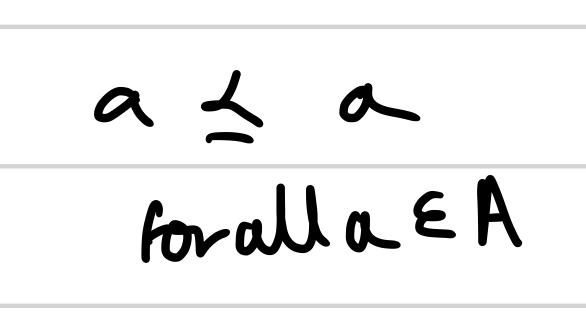
Condition of Antisymmetry
If a is ranked less than or equal to b and b is ranked less than or equal to a then a = b

Condition of transitivity
If a is ranked less than or equal to b and b is ranked less than or equal to c, then a must be ranked less than or equal to c


How can this be read
a is ranked strictly below b
additional condition for a relation on set A to be a totally ordered set
Comparability: either a ⊆ b or b ⊆ a is true
(every element is ranked against every other element)
give an example of when reflexivity is not true
take Z, it is true that 1 = 1. Now take the relation ⊆ to be <. Then clearly 1 ⪯̸ 1 so this natural-looking relation is not reflexive
Poset
A partially ordered set
what is the power set of S where S = {1,2}
P(S) = {∅, {1}, {2}, {1,2}}
Draw a Hasse diagram for the power set of S = {1,2} using the subset ordering
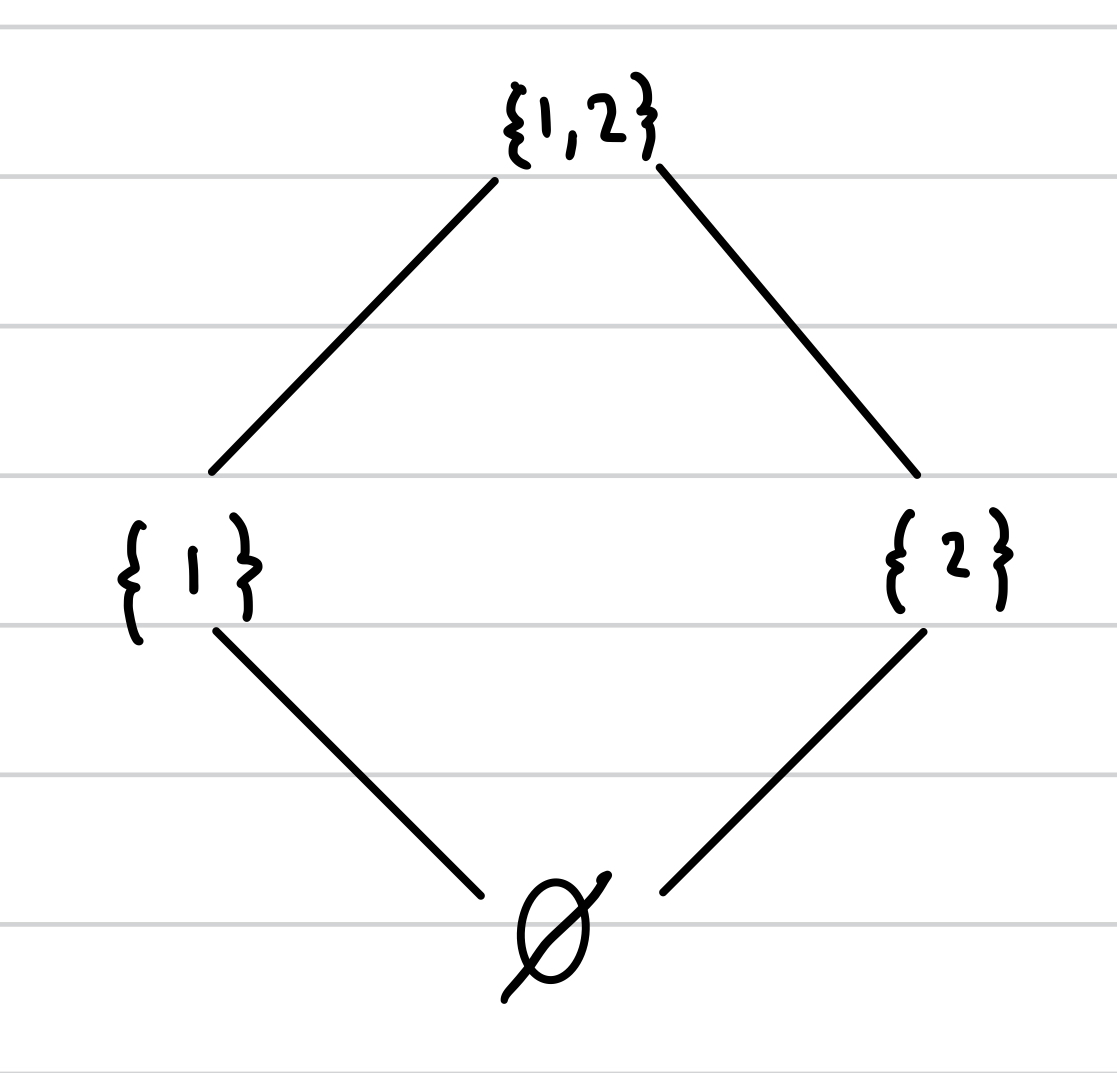
How does subset ordering work
a ⊆ b if every element of a is also an element of b
What is the additional axiom of total ordering
Comparability (totality)
Condition of comparability
For all a and b in A, either a is ranked less than or equal to b or b is ranked less than or equal to a
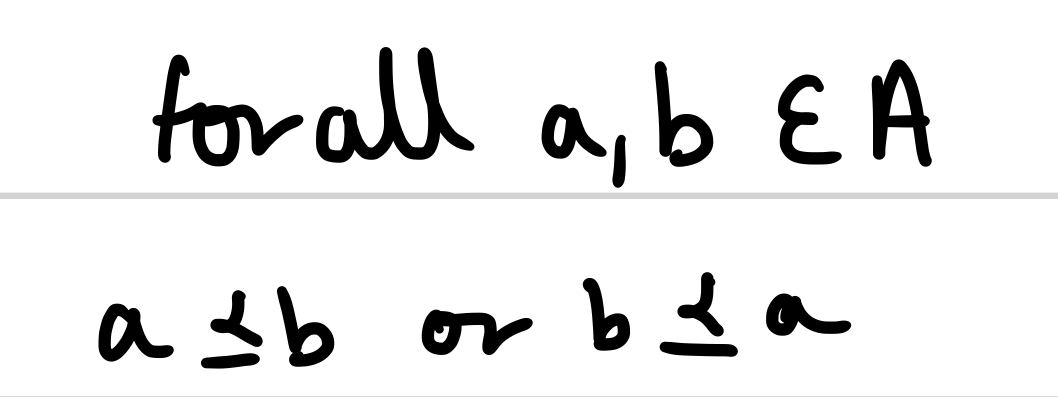
What is the relationship between partially ordered sets and totally ordered sets
Every totally ordered set is also a poset but not every poset is a totally ordered set
Maximal element
An element, m, of a poset, P, such that there is no element x in P where m is ranked strictly less that x. Therefore, either x is ranked less than or equal to m or m is not ranked with x
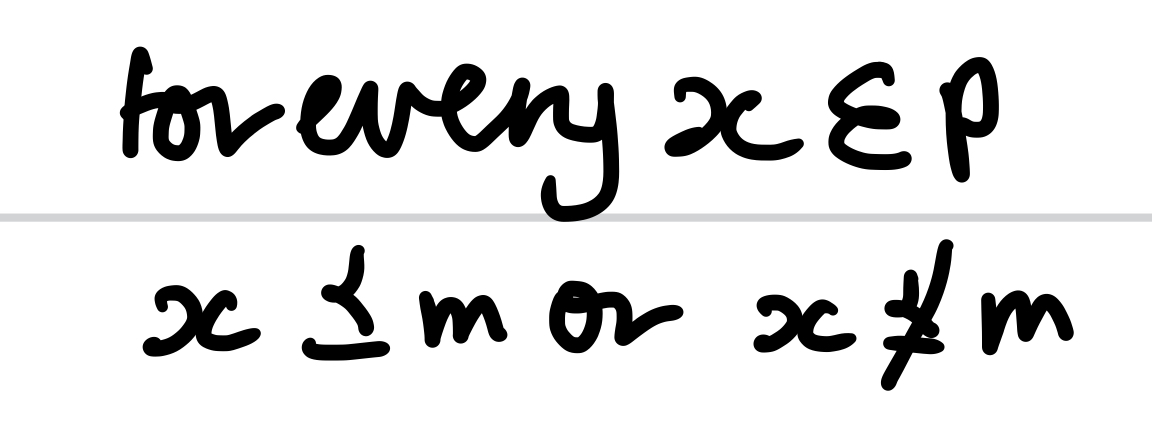
3 conditions for the greatest element
g is an element of S
For every element s ∈ S, s is ranked less than or equal to g
No other element in S satisfies the above two properties simultaneously
which are the maximal element(s) in the poset P = {∅, {1}, {2}, {3}, {1,2}} ordered by the subset relation ⊆
{1,2} and {3}
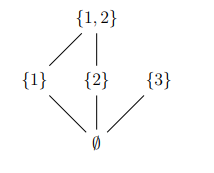
Relationship between greatest and maximal element
A greatest element will always also be a maximal
Hasse diagram for S = {1, 2, 3, 4, 5, 6} where a is ranked less than or equal to b if a divides b
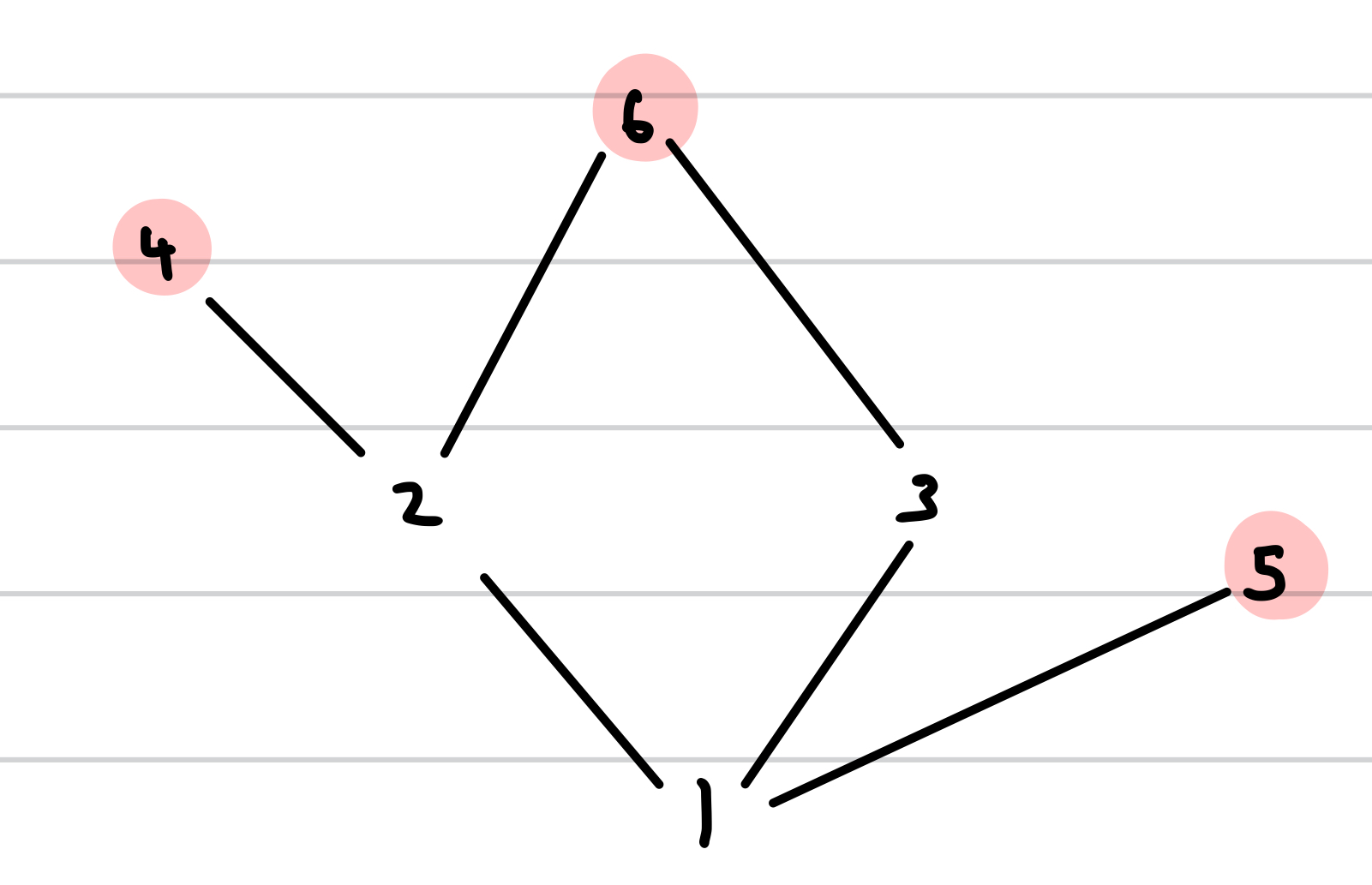

Meaning of
a is ranked less than or equal to b if and only if there exists an integer excluding zero, k, such that b = ka
How can a maximum element not exist
Poset (N, <)
The infinite set of natural numbers
construct a poset that has exactly 1 maximal element
for the only maximal element to not be the greatest element, the poset must be infinite, eg take ≤ on the set of positive integers and let 1≤2, then 2 becomes a maximal element but not greatest
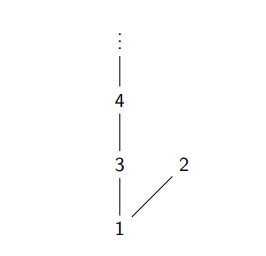
Proof that every nonempty finite set has at least 1 maximal element
Proof by contradiction
Assume that A is a nonempty finite poset of size n with no maximal element. Take element a₁ ∈ A. Then ∃ a₂ ∈A such that a₁ ≤ a₂
continue in this way until reaching aₙ
a₁ ≤ a₂ ≤ a₃ …≤ aₙ
But aₙ cannot be maximal either, so ∃ aₙ₊₁ such that aₙ ≤ aₙ₊₁
Contradiction as n+1 distinct elements found, thereby A must have at least one maximal element
What can be said about a totally ordered finite poset
Must have a greatest element
N
Natural numbers = {1, 2, 3, …}
Z
Integers = {…-3, -2, -1, 0, 1, 2, 3, …}
Q
rational numbers = {p/q: p ∈ Z ∧ q ∈ Z - {0}}
A → B
A implies B
if A, then B
A is a sufficient condition for B
B is a necessary condition for A
what is a sufficient condition
something that guarantees a result
eg being divisible by 4 is a sufficient condition to be an even number
A ← B
A is implied by B
if B, then A
A is a necessary condition for B
B is a sufficient condition for A
P: Paul is happy
Q: Paul paints a picture
Sentence: “Paul is happy only if he paints a picture.”
P → Q
P: Paul is happy
Q: Paul paints a picture
Sentence: “If Paul is happy, then he paints a picture.”
P → Q
for A → B construct the inverse
¬A → ¬B
for A → B construct the contrapositive
¬B → ¬A
for A → B construct the converse
B → A
Which type of logical statement is equivilent to the original
Contrapositive
Prove (∀a, b ∈ Z)(a + b ≥ 15 ⇒ a ≥ 8 ∨ b ≥ 8)
Use proof by contraposition
contrapositive: (∀a, b ∈ Z)(a < 8 ∧ b < 8 ⇒ a + b < 15)
a < 8 ∧ b < 8 ⇒ a ≤ 7 ∧ b ≤ 7 ⇒ a + b ≤ 14 < 15
The contrapositive statement is true. We have proved the original statement is true using proof by contraposition
∀
for all
∃
there exists
difference between
(∀x)(∃y) x > y
(∃y)(∀x) x > y
For every x there is a y such that x > y
vs
there is a y such that for every x, x > y
Negate (∀x ∈ R)P(x),
(∃x ∈ R)¬P(x)
Prove (∀n ∈ Z)n² is even ⇒ n is even
Proof by contradiction
assume the negation: (∃n ∈ Z)n² is even → n is odd
((∃n ∈ Z)n² is even ⇒ n is odd) ↔ (∃a, b ∈ Z)(2a + 1)² = 2b
(2a + 1)² = 2b
4a² + 4a + 1 = 2b
2a² + 2a + ½ = b
½ = b − 2a² − 2a
contradiction as RHS is an integer, but LHS is not